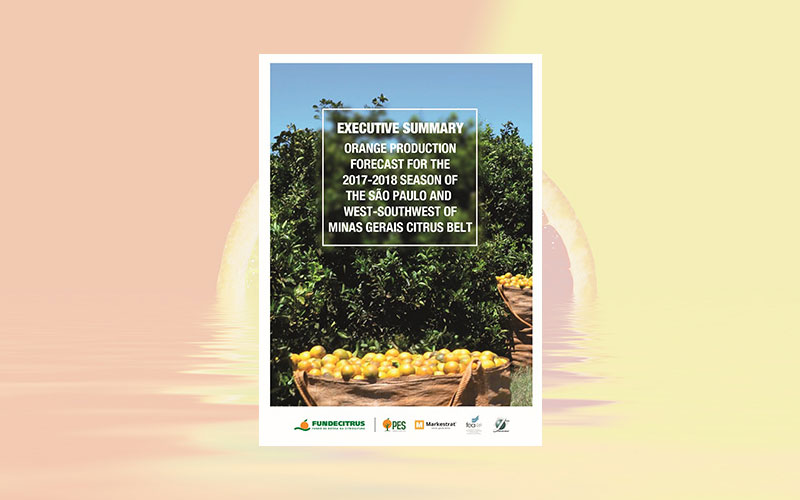Orange production forecast for the 2017-2018 season of the São Paulo and West-Southwest of Minas Gerais Citrus Belt
The 2017-2018 orange production forecast published on May 10, 2017 by Fundecitrus with the cooperation of Markestrat, FEA-RP/USP and FCAV/Unesp1 is 364.47 million boxes (40.8 kg).

May/2017 Forecast
The 2017-2018 orange production forecast published on May 10, 2017 by Fundecitrus with the cooperation of Markestrat, FEA-RP/USP and FCAV/Unesp1 is 364.47 million boxes (40.8 kg). This total includes:
- 68.49 million boxes of the Hamlin, Westin and Rubi varieties;
- 17.42 million boxes of the Valencia Americana, Valencia Argentina, Seleta and Pineapple varieties;
- 114.52 million boxes of the Pera Rio variety;
- 123.04 million boxes of the Valencia and Valencia Folha Murcha varieties;
- 41.00 million boxes of the Natal variety.
1 – Bearing trees
The bearing trees of the varieties which make up this forecast total 174.78 million. The information about bearing trees were extracted from the Tree Inventory of the São Paulo and West-Southwest Minas Gerais Citrus Belt: Snapshot of Groves in March/2017, which was updated by the field assessment carried out from January 30 to March 10, 2017.
2 – Fruit per tree
The average number of fruit per tree in April/2017, not considering the droppage to occur during the season, was measured at 753 fruits per tree. The bloom issuance and fruit setting rate of the 2017/2018 season which took place between August and December 2016 benefited from the low yield of the previous harvest, which provided a dormant period in the reproductive cycle, resulting in increased energy reserves in the trees of the general citrus belt. Weather conditions observed in this period also contributed to the increased yield. In July, water and heat stresses caused by cold nights (average of 12 °C in the citrus belt) followed by warm, dry days (average of 27.3 ºC) favored floral induction with the arrival of the first rains in August 2016, except those regions of the Triângulo Mineiro, Altinópolis and Matão which had the start of regular rainfall in October.
…
1 Exact Sciences Department of Jaboticabal.
Please open the link for the full forecast: http://www.fundecitrus.com.br/pdf/pes_relatorios/2017_10_05-Executive-Summary-of-Orange-Production-Forecast-for-the-2017-2018_Season.pdf









